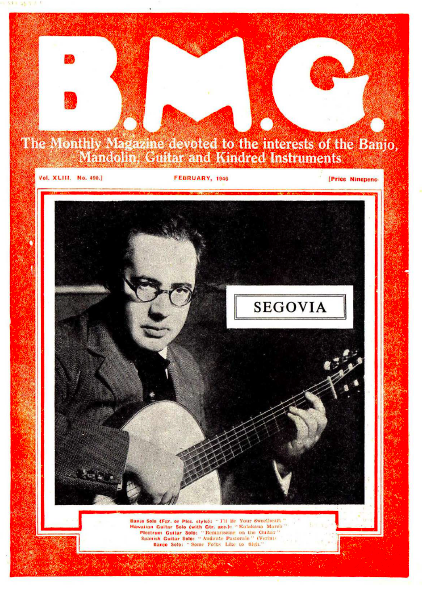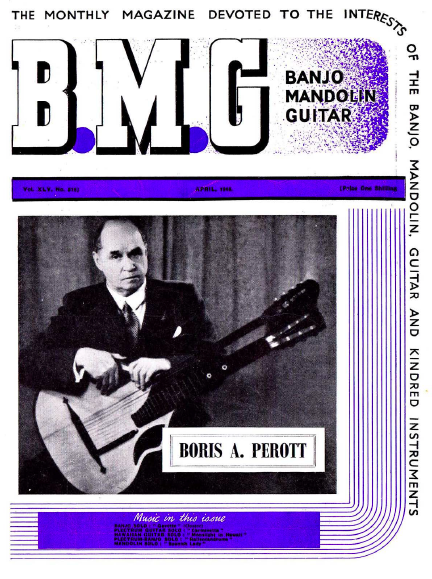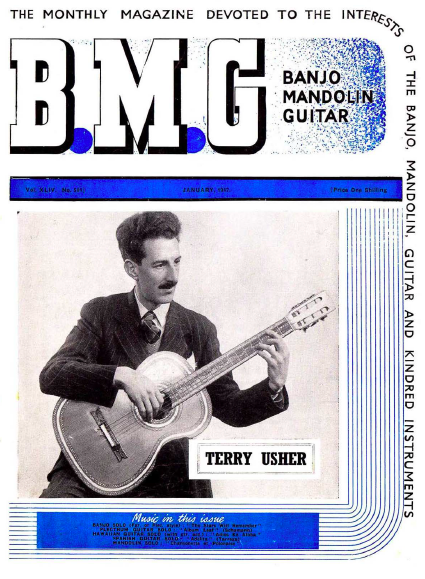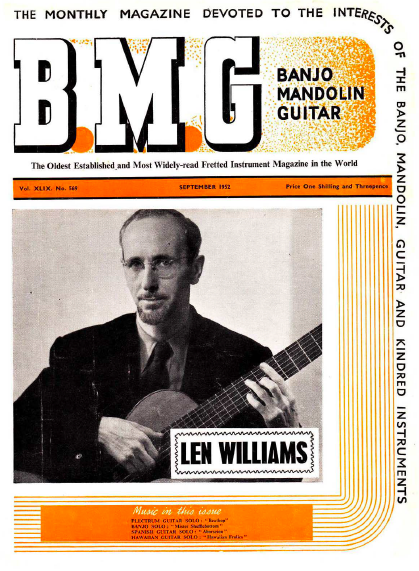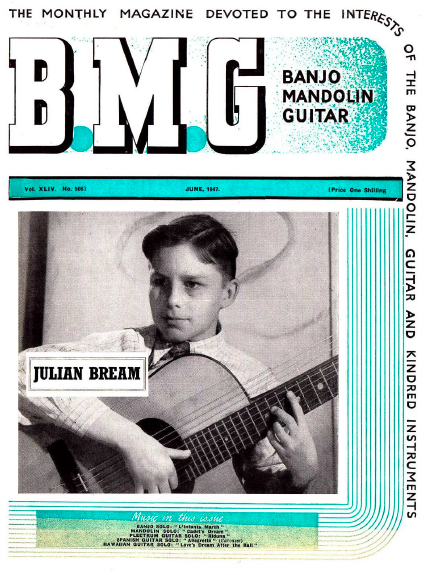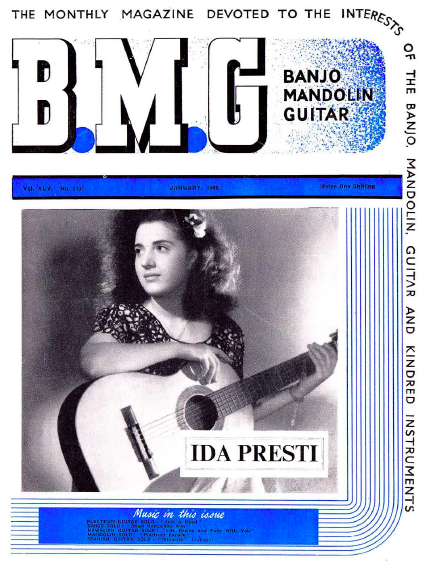For those of us interested in the 20th century history of the guitar, Banjo Mandolin Guitar (BMG) magazine is a key source of information. BMG was published between 1903 and 1976 and claimed to be ‘The Oldest Established and Most Widely-read Fretted Instrument Magazine in the World’. In January, I came across efforts to digitise every issue of BMG and at the time, there were 372 issues online. Yesterday, I checked and was impressed to see that a further 211 had been scanned and uploaded in the last few months, amounting to about 70% of the total. It’s a rich resource for documentary research – effectively a form of primary data – and a source of historical and social minutiae coloured by the obsessive personalities of the writers.
Two other magazines that are very useful to researchers are Guitar News (1951-1973) and Guitar Review (1946-2009). They are held in libraries, but digitisation would enable researchers to OCR them (Optical Character Recognition) and thereby run keyword searches across the entire collection. This is what I have done for BMG and it is a timesaving, systematic and thorough way of mining the magazines for information.
Graham Wade wrote ‘An Obituary for Guitar News’, published in BMG, May 1973:
“Guitar News became a historic and vital record of the growth of the guitar’s popularity throughout the world; the earliest editions are now of considerable value and a complete collection of the magazine’s 119 editions would be worth its weight in gold for any researcher or aficionado of the “classic” guitar… A complete study of these early editions will yield an incredible amount of information… to the discerning reader this information proved a remarkable compilation of the guitar’s history, and often Guitar News was the only periodical to contain either a hint of some guitarist to emerge from the depths of South America (or Japan) of significance or a report of some obscure guitar course in some part of the world attended by a renowned guitarist. The magazine became the eyes and ears of the guitar world, like a seismograph recording every vibration of a guitar string on the face of the earth, and through the years building up an infallible library of reference and informative material by reason of the sheer cumulative weight of its pages… The value of Guitar News as a historical record of the guitar is monumental; its importance is greatly in excess of the sum of the individual editions, and we can but thank its editor for the single-minded labour he lavished in the cause of the guitar.”
The same could be said of BMG.
